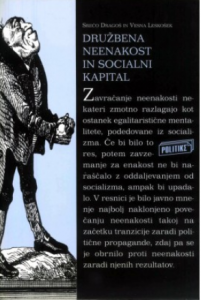
Social Inequality and Social Capital
The book focuses on the interplay between two social phenomena (social inequality and social capital) that are crucial for the understanding of contemporary trends in the area of welfare and political systems. In the first part of the book, the authors draw attention to the dangers of the simplification of social realities usually manifested as ideology. The chapter on inequality looks into the three most common ideological approaches to this concept. The chapter on social capital is a useful guide to understanding the relation between social inequality and stratification. The implications of these phenomena for everyday life are revealed through the action study of the ten Ljubljana communities presented in the second part of the book. The loss of the community resources in the transition period, caused by denationalization and privatization, has had fateful effects on the everyday life of community members, their options, social participation and attitudes to people which are traditionally suffused with prejudices and stereotypes.
Foreword
Ideology
